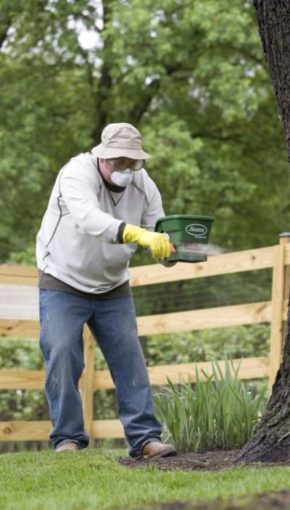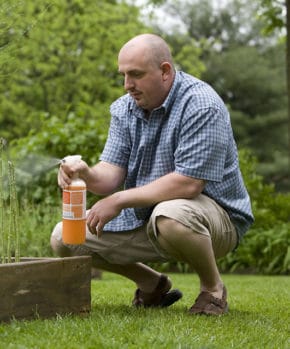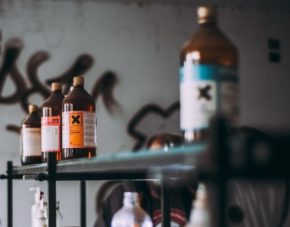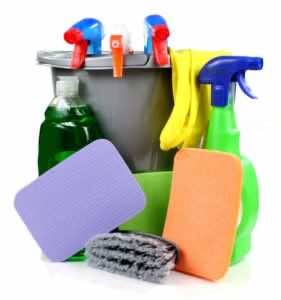Household & Garage Items Poisonous to Your Pet
Last week we focused on all the deadly plants your pet might discover while in your garden or outside. In part 2 of our 3-part series, we focus on some other dangers you should be aware of during the next few months.
It is spring, a time of renewal; we are focused on making beautiful gardens, renewing our yards, purging and cleaning the inside of our houses, and then enjoying the beautiful weather. We don’t want to have to worry about dealing with an emergency with our fur babies!
Below we talk about 4 more dangers your pet might encounter this spring.
 Fertilizers, mulch products, and soil additivesSeveral fertilizers can be less toxic to your pet, and some that can be fatal. Make sure you are reading about what your fertilizer contains and do some research! Most fertilizers contain only nitrogen, potash, and phosphorous, which are generally non-toxic. Some also may contain insecticides which usually only result in mild gastrointestinal signs. More severe signs often come from a pet eating the fertilizer directly out of the bag, so if you are applying fertilizer, it is best to keep your pet inside until the soil has absorbed the fertilizer. Watch out for organic fertilizers! Organic fertilizers are the ones to watch out for as they can contain leftover byproducts of the meat-packing or farming industry, which can be harmful to our pets. These “meals” included in organic fertilizers smell great to dogs and may cause your dog to ingest a high amount of the product. If a fertilizer contains blood meal, it may cause vomiting or diarrhea and even lead to severe pancreatitis. Bone meal in your fertilizer can cause a large cement-like bone ball to form as an obstruction in the stomach if ingested. These fertilizers can also contain feather meal or fish meal which can also cause gastrointestinal irritation. Other fertilizers, such as rose and plant fertilizer, which possibly could contain disulfoton or different types of organophosphates (OP), can kill a 55 lb dog with simply one teaspoon! Some fertilizers may contain Iron which can also be toxic. Mulch. Most mulch is benign but may still cause a foreign body if your dog ingests them since they usually are made of shredded tree bark. Cocoa bean mulch is the one you should watch out for since the cocoa bean is used to make chocolate, which most of us know is toxic to dogs! This mulch still contains small amounts of theobromine (the chemical that results in chocolate poisoning), which can still cause the signs of chocolate poisoning if ingested in large quantities. |
 Pesticides & InsecticidesMost are just basic irritants, but those containing organophosphates or carbamates can be life-threatening if consumed in large quantities. Ok, so we have some fun, big words going on here that put you back in science class!! Don’t worry, I won’t get too technical here, if you want to do your own research about what these words mean and how they affect your pets, go to this PetMD article for a more technical breakdown. Usually, repeated or heavy application of these chemicals will be toxic to pets. Some symptoms you should watch out for are fever, vomiting, diarrhea, anorexia, depression, seizures, muscle tremors, hypersalivation, constricted pupils, increased heart rate, lack of coordination, or respiratory failure. |
 Garage HazardsYou may be working outside or in the garden, and your pet wanders inside your garage. Think about all the hazardous, poisonous items that are in there for humans!! These items will most likely cause more severe symptoms for your pet since they are physically smaller than you! To remind you of the dangers in store for your pets, I have listed some items below typically kept in the garage. Try to keep these items out of reach of your pet but if they ingest any of the following, DO NOT induce vomiting, and make sure you call a pet poison helpline or emergency vet for assistance! Antifreeze – It has a sweet smell and taste to pets, so they want to consume a high volume. Hopefully, you are storing this product high up but if you suspect they have been poisoned by antifreeze, a quick reaction time is critical!!! |
 Spring Cleaning ProductsMost surface cleaning products may result in only minor gastrointestinal symptoms (vomiting or diarrhea) in your pet; however, some can cause a more significant threat. The Pet Poison Helpline lists the most corrosive or acidic dangers to your pets and what to do if your pet is exposed. To explore more common household products and how they affect your pet, check out the ASPCA site. |
As we see, there are many toxic products to our furry friends, and they can be found in some places that we don’t think about. The Pet Poison Helpline is a great resource to research all the poisons your dog or cat may come across and to check out the complete signs of poisoning in dogs or cat. It is also a good idea to have an Animal Poison Control Center or an Emergency Clinic on your speed dial. As we said above, please DO NOT induce vomiting in your pet unless you have been told to do so by a veterinarian or Animal Poison Control. Some of the items above can be just as corrosive coming back up your pet’s throat.
Check back next week for the last article in our series about dangers your pet may encounter this spring.
References
‘Fertilizers’, Pet Poison Helpline. Available at: https://www.petpoisonhelpline.com/poison/fertilizers/ (Accessed: 27 March 2019)
‘Spring Pet Poisons’, Pet Poison Helpline. Available at: https://www.petpoisonhelpline.com/pet-owners/seasons/spring/ (Accessed: 27 March 2019)
Lee, J. (2014) ‘Fertilizer and Mulch Dangers for Dogs’, Pet Health Network, 16 June. Available at: http://www.pethealthnetwork.com/dog-health/dog-toxins-poisons/fertilizer-and-mulch-dangers-dogs (Accessed: 27 March 2019)
‘Keeping Your Pets Safe from Garage Hazards’, Pet Health Network. Available at: http://www.pethealthnetwork.com/dog-health/dog-toxins-poisons/keeping-your-pets-safe-garage-hazards (Accessed: 27 March 2019)

